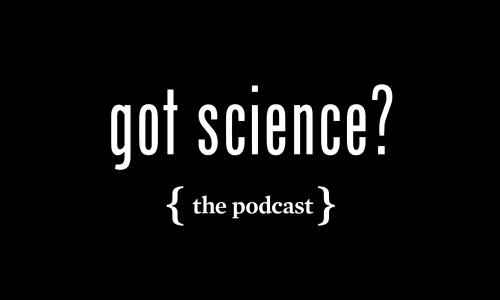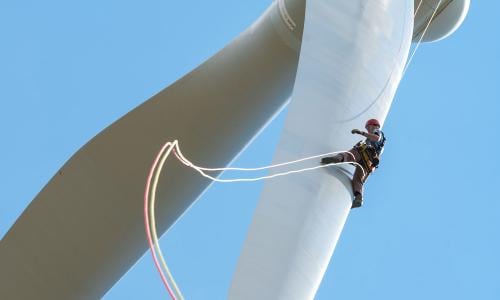Table of Contents
Dirty cars, dirty air
Cars, trucks, and buses powered by fossil fuels are major contributors to air pollution. In fact, transportation emits more than half of nitrogen oxides in our air, and is a major source of global warming emissions in the US. ;Studies have linked pollutants from vehicle exhaust to adverse impacts on nearly every organ system in the body.
While this air pollution carries significant risks for human health and the environment, through clean vehicle and fuel technologies, we can significantly reduce emissions from our cars and trucks, and help transform transportation.
The ingredients of air pollution
Cars, trucks and buses produce air pollution throughout their life cycle, including pollution emitted during vehicle operation and fuel production. Additional emissions are associated with refining and distribution of fuels and to a lesser extent, manufacturing and disposal of the vehicle.
Air pollution from cars, trucks and buses is split into primary and secondary pollution. Primary pollution is emitted directly into the atmosphere; secondary pollution results from chemical reactions between pollutants in the atmosphere. Fetuses, newborn children, and people with chronic illnesses are especially susceptible to the effects of air pollutants. The following are the major pollutants from motor vehicles:
- Particulate matter (PM). One type of particulate matter is the soot seen in vehicle exhaust. Fine particles — less than one-tenth the diameter of a human hair — pose a serious threat to human health, as they can penetrate deep into the lungs. PM can be a primary pollutant or a secondary pollutant from hydrocarbons, nitrogen oxides, and sulfur dioxides. Diesel exhaust is a major contributor to PM pollution.
- Volatile Organic Compounds (VOCs). These pollutants react with nitrogen oxides in the presence of sunlight to form ground level ozone, a main ingredient in smog. Though beneficial in the upper atmosphere, at the ground level this gas irritates the respiratory system, causing coughing, choking, and reduced lung capacity. VOCs emitted from cars, trucks and buses — which include the toxic air pollutants benzene, acetaldehyde, and 1,3-butadiene — are linked to different types of cancer.
- Nitrogen oxides (NOx). These pollutants form ground level ozone and particulate matter (secondary). Also harmful as a primary pollutant, NOx can cause lung irritation and weaken the body's defenses against respiratory infections such as pneumonia and influenza.
- Carbon monoxide (CO). This odorless, colorless, and poisonous gas is formed by the combustion of fossil fuels such as gasoline and is emitted primarily from cars and trucks. When inhaled, CO blocks oxygen from the brain, heart, and other vital organs.
- Sulfur dioxide (SO2). Power plants and motor vehicles create this pollutant by burning sulfur-containing fuels, especially diesel and coal. Sulfur dioxide can react in the atmosphere to form fine particles and, as other air pollutants, poses the largest health risk to young children and asthmatics.
- Greenhouse gases. Motor vehicles also emit pollutants, predominantly carbon dioxide, that contribute to global climate change. In fact, tailpipe emissions from cars, trucks and buses account for over one-fifth of the United States' total global warming pollution; transportation, which includes and airplanes, trains and ships accounts for around thirty percent of all heat-trapping gas emissions.

The effects of air pollution
Pollutants from vehicle exhaust can affect more than just your lungs. Indeed, tailpipe pollutants pose health risks at every stage of life, and can even cause premature death. But the impacts of climate change, driven by global warming emissions, also affect people's health and the well-being of entire communities. Global warming is leading to more frequent and intense heat waves—especially risky to children and elderly people—and to sea level rise, flooding, and drought that can devastate local communities.
People in low-income communities and communities of color are disproportionately exposed to higher levels of air pollution. Marginalized by urban segregation in US cities, these communities are often located near freight centers and heavily traveled roadways, and can lack access to the resources to adapt to—or move away from—air pollution and climate-related damage.
Emissions from heavy-duty vehicles
Trucks and buses play a major role in our lives, hauling goods from manufacturers to stores, picking up our trash, delivering packages, and transporting thousands of people around cities, everyday. But these vehicles also also greatly affect public health and global warming
Heavy-duty vehicles comprise only about 5 percent of all vehicles on the road, yet they generate more than 25 percent of global warming emissions that come from the transportation sector, and significant amounts of air pollution. As the United States moves more and more freight each year, the challenge of reducing emissions from this sector will continue to grow.
Addressing heavy-duty vehicle pollution is critical for improving air quality and reducing global warming emissions in communities around the country. Continuing to lower emissions from fossil fuel–powered trucks is an important first step.
Clean air benefits of electric trucks and buses
Just as electric cars are helping to reduce pollution from passenger vehicles, electric trucks and buses could eliminate tailpipe pollution entirely, and increase the development of clean, renewable electricity and hydrogen.
In addition to emitting no harmful tailpipe pollution, electric trucks and buses have significantly lower global warming emissions than vehicles powered by fossil fuels. A battery-electric bus on today’s electricity grid is the lowest-carbon option in every part of the country.
Battery- and fuel cell–electric trucks and buses, especially transit buses, are already operating in cities across the United States, and these fleets continue to expand as new models become available. A growing number of cities are committed to 100 percent zero-emission transit buses in their fleets—including New York and Los Angeles, which represent the two largest bus fleets in the country.
Cleaner air is on its way
The right policies and investments from federal, state, and municipal governments will accelerate the transition to a zero-emissions transportation system. These include setting targets for electric truck and bus adoption, enacting standards for manufacturers to make more of these types of vehicles, and developing and funding incentive programs to help cities and companies achieve these goals.
These policies and investments should also ensure that workers from marginalized communities gain access to training and job opportunities, and that electric vehicle deployment is prioritized in the communities already breathing the dirtiest air.




